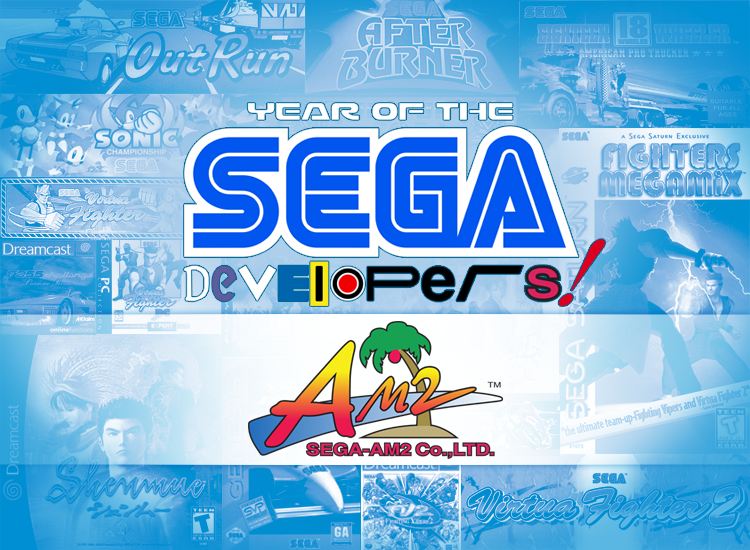
SEGA AM2 is just one of those developers that always puts a smile on my face whenever I talk about their games. Not only do they have one of the most vast libraries, but they also revolutionized gaming in general multiple times over the past decades. Let’s look at the developer that popularized sprite-scaling in the 80s, gave us modern 3D with their Virtua series and created one of the most expensive games ever as we walk through their legacy.
Don’t forget to join us all month long while we talk more about SEGA AM2 and all their legendary franchises.
Super Scaler: Defining the 80s arcade experience

SEGA AM2’s future leader, Yu Suzuki joined SEGA AM2 out of college where he went to be an illustrator. His first task at the company was to port the arcade game Boxing Championship from the arcade to SEGA’s SG-1000 computer console at the time. After the mild success of the port, Yu Suzuki started working on his next arcade project around the emphasis using the body to move the onscreen character. With this idea came the new sprite scaling engine created by Yu Suzuki and the folks at SEGA AM2 called ‘Super Scaler’. SEGA would take their idea of full body motion controls and their new engine and create a slew of arcade classics that would shape and influence the industry.
Let’s take a look down memory lane as we hit the mid-eighties at the height of the early arcade craze.
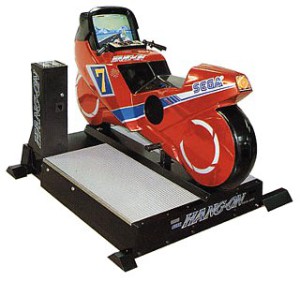 Hang-On (ハングオン) 1985: The game that started it all, not only was this the first game to use the Super Scaler engine designed by Yu Suzuki, it was also the first arcade game to use 16-bit graphics and even touted as being the first full body controlled arcade experience. The cabinet was a bike that the player would sit and by moving the bike to the right or to the left you would move the in-game character.
Hang-On (ハングオン) 1985: The game that started it all, not only was this the first game to use the Super Scaler engine designed by Yu Suzuki, it was also the first arcade game to use 16-bit graphics and even touted as being the first full body controlled arcade experience. The cabinet was a bike that the player would sit and by moving the bike to the right or to the left you would move the in-game character.
This started SEGA’s Taikan trend where they would make big elaborate arcade cabinets and would stay a trend much throughout their career. In a way, a simple arcade game like Hang-On became the birth of SEGA-AM2 and the first step into being one of Japan’s most prolific developers. Hang-On also featured billboards in the arcade version that would advertise Marboro cigarettes and Bridgestone tires.
Gallery:
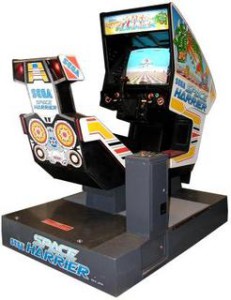 Space Harrier (スペースハリアー) 1985: SEGA AM2’s games moved fast and so did their development cycles. Right after introducing its new Super Scaler Engine, they go from making a motorcycle driving game to a psychedelic on-rail shooter. Much like Hang-On, Space Harrier would also have its own unique cabinet that would affected by the movement of the arcade stick.
Space Harrier (スペースハリアー) 1985: SEGA AM2’s games moved fast and so did their development cycles. Right after introducing its new Super Scaler Engine, they go from making a motorcycle driving game to a psychedelic on-rail shooter. Much like Hang-On, Space Harrier would also have its own unique cabinet that would affected by the movement of the arcade stick.
Space Harrier also used digitized speech which was rare for games to use in the mid-eighties. The game’s lines: “Welcome to the Fantasy Zone. Get Ready!” have become a popular phrase in video game culture. Space Harrier actually shares the same world with Fantasy Zone as both games take place in the fictional world of ‘Fantasy Zone’.
Space Harrier was actually highly influenced by a 1983 SEGA arcade game called Buck Rogers: Planet of Zoom which also had a cabinet very similar to the one used in Space Harrier.
Gallery:
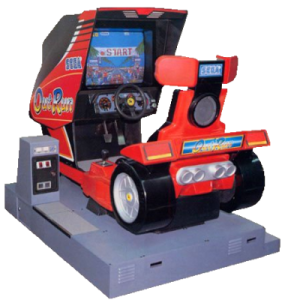 OutRun (アウトラン) 1986: Just a year after Hang-On came out with its own special hardware, SEGA-AM2 was ready to move on to new hardware as they created a brand new game with OutRun. Just like the past two game, this game also runs on Yu Suzuki’s Super Scaler technology and is considered a milestone achievement in the racing genre, even though Yu Suzuki rather thinks of the game as a ‘Driving Game’ instead of a racing one.
OutRun (アウトラン) 1986: Just a year after Hang-On came out with its own special hardware, SEGA-AM2 was ready to move on to new hardware as they created a brand new game with OutRun. Just like the past two game, this game also runs on Yu Suzuki’s Super Scaler technology and is considered a milestone achievement in the racing genre, even though Yu Suzuki rather thinks of the game as a ‘Driving Game’ instead of a racing one.
Outrun is one of the early games in racing that tried to simulate driving a car by adding the feeling of horsepower, torque, tire traction, and of course drifting. The game’s main car was a Ferrari Testarossa which wasn’t actually officially licensed by SEGA, thus they had to go to court multiple times after the game was released.
The game would have the user drive through a stage, when reaching the end of the course (under the allocated time) you are asked to choose going left or right, each path opening up a different area to drive. This was mean’t so arcade players would come back and drive a different way, thus giving them the actual sense of driving different paths much like real life.
OutRun would continue to simulate driving a real car by being the only game at the time to allow the user to choose their tracks before drving, much like choosing what to listen to before driving a real life car. OutRun is the most successful arcade machine released in 1986 and SEGA AM2’s success was just getting started…
Gallery:
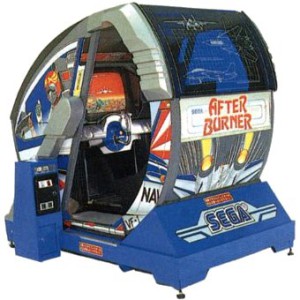 After Burner I and II (アフターバーナー) 1987:This highly successful SEGA AM2 game ditched the OutRun hardware and used the new SEGA X board which was a lot llike the Outrun hardware but allowed to run twice as many sprites on screen at once with twice as many tile layers.
After Burner I and II (アフターバーナー) 1987:This highly successful SEGA AM2 game ditched the OutRun hardware and used the new SEGA X board which was a lot llike the Outrun hardware but allowed to run twice as many sprites on screen at once with twice as many tile layers.
After Burner’s arcade release was exclusive to Japan, while the rest of the world got an updated version with the international release of After Burner II. After Burner II was the same game as the first with minor tweaks and extra levels. Due to how similar After Burner and After Burner II are in both cabinet and in-game design, many people often confuse themfor the same game.
After Burner is pretty straight forward when it comes to gameplay, relying more on surviving the stage rather than destroying enemies. Tom Cruise and Top Gun fans, eat your heart out.
Gallery:
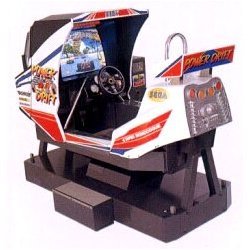 Power Drift (パワードリフト ) 1988: This is probably the most unpopular title we will be talking about during this era of AM2’s career. This game used the SEGA Y board, which was a upgrade to After Burner I & II‘s SEGA X board. Power Drift isn’t just known as being the first kart racing game, but also known for the way it scaled sprites using track layouts with flat bitmaps instead of flat shaded colors.
Power Drift (パワードリフト ) 1988: This is probably the most unpopular title we will be talking about during this era of AM2’s career. This game used the SEGA Y board, which was a upgrade to After Burner I & II‘s SEGA X board. Power Drift isn’t just known as being the first kart racing game, but also known for the way it scaled sprites using track layouts with flat bitmaps instead of flat shaded colors.
Since the game used bitmapping it would allow the developers to create tracks that felt like riding a roller coaster including sharp inclines, dives, curves and even a series of jumps.
A lot of the ground work laid out by Power Drift would be used in Nintendo’s Mario Kart series which would go on to popularize the Kart Racing genre. SEGA would later create their Game Gear exclusive Sonic Drift kart racing games, despite their names and similar genre; nothing points to either game being related to each other.
Gallery:
Still striving for 3D into the 90s

SEGA AM2 continued to use the Super Scale engine into the early 90s with titles like G-LOC: Air Battle (1990) and Strike Fighter (1991) which where both made using the SEGA Y Board (see Power Drift). AM2 also started developing on the System 32 board by dipping their feet in the beat-’em-up genre with Arabian Fight (1991) and their 2D fighting game Burning Rival (1993). But what AM2 was really working on that would blow everyone in the arcades away was their Model 1 board, which is SEGA’s first arcade hardware to introduce polygons.
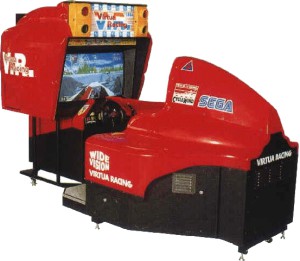 Virtua Racing (バーチャレーシング) 1992: was first shown to SEGA as a proof of concept for the Model 1 board. It showed that it could handle 3D racing at 60 fps. Even though companies like Namco and Atari Games did 3D arcade racers before SEGA, none of them could render it at 60 fps and support multiple human players. SEGA AM2 succeeded where everyone else failed.
Virtua Racing (バーチャレーシング) 1992: was first shown to SEGA as a proof of concept for the Model 1 board. It showed that it could handle 3D racing at 60 fps. Even though companies like Namco and Atari Games did 3D arcade racers before SEGA, none of them could render it at 60 fps and support multiple human players. SEGA AM2 succeeded where everyone else failed.
Virtua Racing is also the first SEGA title to use the Virtua franchise trademark that would become a brand name for most of SEGA’s 3D titles spanning various genres. As most pioneering titles the game was pretty basic not offering textured polygons or have damage animations due to the limitations in the Model 1 arcade hardware.
Even though Virtua Racing was impressive for its time, it would be nothing compared to what they had next…
Gallery:
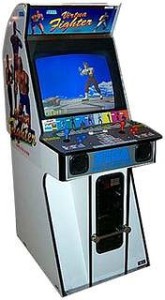 Virtua Fighter (バーチャファイター) 1993: Called by most people as the grand father of 3D fighting games, AM2 went beyond the call when they where asked to create a 3D fighter that would be able to rival the immensely popular Street Fighter II.
Virtua Fighter (バーチャファイター) 1993: Called by most people as the grand father of 3D fighting games, AM2 went beyond the call when they where asked to create a 3D fighter that would be able to rival the immensely popular Street Fighter II.
Unlike Capcom or SNK at the time, AM2 tried to base each character out of real life fighting styles oppose to fantasy elements enjoyed by both Street Fighter and King of Fighters series. Many believe the game was influence by an earlier SEGA developed pseudo 3D fighter called Dark Edge.
Virtua Fighter would go on to become the most popular title in the Virtua series of games and one of AM2’s longest running franchises. Due to the limitations of the Model 1 arcade hardware, the polygons couldn’t have textures on them. SEGA would later get AM1 to update the port for the Saturn, adding textured graphics. Even though the game would have updated graphics on the SEGA Saturn, it wouldn’t be as smooth or as fast as the original arcade.
Gallery:
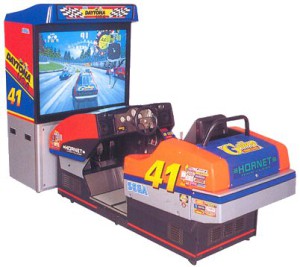 Daytona USA (デイトナUSA) 1994: Daytona USA is pretty much a sort of Virtua Racing sspiritualsuccessor in the way that it was created to show off what the new Model 2 arcade board is capable of (the same way Virtua Racing was made to show off the Model 1 arcade board). While Daytona USA features less polygons than Virtua Racing, the polygons that are in are fully textured, creating a more realistic environment.
Daytona USA (デイトナUSA) 1994: Daytona USA is pretty much a sort of Virtua Racing sspiritualsuccessor in the way that it was created to show off what the new Model 2 arcade board is capable of (the same way Virtua Racing was made to show off the Model 1 arcade board). While Daytona USA features less polygons than Virtua Racing, the polygons that are in are fully textured, creating a more realistic environment.
The idea for Daytona USA was created by Toshihiro Nagoshi, who would later go on to create the Super Monkey Ball and Yakuza franchises. He got the idea for the game when he visited America and watched a NASCAR race.
This game is also one of the few AM2 games listed here that Yu Suzuki didn’t have much to do with, outside of being thanked in the credits.
Gallery:
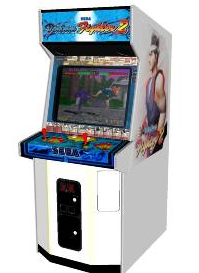 Virtua Fighter 2 (バーチャファイター2) 1994: There is no rest for AM2, Virtua Fighter‘s sequel would come a mere year later on a whole new arcade board. Taking full advantage of Mode 2’s textured graphics, Virtua Fighter 2 was a huge step up to its previous game. The game would bring faster-paced gameplay, momentum-based damage (that’s become a staple of the series) and some of the characters even got the ability to sidestep.
Virtua Fighter 2 (バーチャファイター2) 1994: There is no rest for AM2, Virtua Fighter‘s sequel would come a mere year later on a whole new arcade board. Taking full advantage of Mode 2’s textured graphics, Virtua Fighter 2 was a huge step up to its previous game. The game would bring faster-paced gameplay, momentum-based damage (that’s become a staple of the series) and some of the characters even got the ability to sidestep.
Just a year after inventing the 3D fighting genre, AM2 already saw itself having competition with Namco’s Tekken series which launched the same year.
Virtua Fighter 2 is a huge leap compared to what AM2 introduced to us with the first Virtua Fighter game and they would only re-tweak and re-use the fighting engine. Virtua Fighter 2 was one of the most popular fighting games to be released in Japan during the 90s or also known as the fighting craze era.
Gallery:
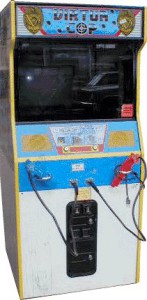 Virtua Cop (バーチャコップ) 1994: If creating the massively popular Daytona USA and Virtua Fighter 2 wasn’t enough in a year, AM2 has to top all expectations by releasing the light gun shooting game titled Virtua Cop.
Virtua Cop (バーチャコップ) 1994: If creating the massively popular Daytona USA and Virtua Fighter 2 wasn’t enough in a year, AM2 has to top all expectations by releasing the light gun shooting game titled Virtua Cop.
Virtua Cop isn’t just one of the first light gun games to use polygons, but its also highly regarded as one of the reasons for the re-popularity of light gun shooters in the mid-nineties and would inspire games like House of the Dead and Namco’s Time Crisis (which both became even bigger than Virtua Cop!)
Virtua Cop is also one of the first game that allowed the user to shoot bad guys through glass and have different animation depending on where the bad guys were shot. GoldenEye 007 creator says that Virtua Cop is the primary inspiration for the first person game, stating it was suppose to be a light-gun and then changed to a free roaming first person shooter.
“We ended up with innovative gameplay, in part because we had Virtua Cop features in a FPS: A gun that only holds 7 bullets and a reload button, lots of position dependent hit animations, innocents you shouldn’t kill, and an aiming mode. When you press R in GoldenEye, the game basically switches to a Virtua Cop mode. Perhaps more importantly following the lead from Virtua Cop, the game was filled with action. There was lots to do, with very few pauses.” – Martin Hollis, Creator of Killer Instinct, GoldenEye 007 and Perfect Dark
GoldenEye 007 didn’t come out until 3 years after Virtua Cop hit the arcades.
Gallery:
 Fighting Vipers (ファイティングバイパーズ) 1995: While AM2’s fighting franchise, Virtua Fighter was earning a huge following due to its unique, more realistic approach to the fighting genre; they had something more imaginative cooking up for 1995. This is the year that they introduced their new fighting franchise, running on the Virtua Fighter engine, Fighting Vipers. Fighting Vipers became one of the many fighting games at SEGA during this time to be sharing the engine.
Fighting Vipers (ファイティングバイパーズ) 1995: While AM2’s fighting franchise, Virtua Fighter was earning a huge following due to its unique, more realistic approach to the fighting genre; they had something more imaginative cooking up for 1995. This is the year that they introduced their new fighting franchise, running on the Virtua Fighter engine, Fighting Vipers. Fighting Vipers became one of the many fighting games at SEGA during this time to be sharing the engine.
Just like Virtua Fighter 2, the game uses three buttons for various attacks and grabs. You can guard, punch or kick while focusing on landing combos. The game does have a couple of unique set of features to set it apart from other fighting games which include armor and closed off walls that would break through during the rounds finale if the player used the right combo combination.
The game also mostly focused on teenage characters as oppose to Virtua Fighter series which spanned to larger age groups.For example Picky is stated as being 14 years old during the first game, imagine barely getting into highschool and having to brawl some lame Guns N’ Roses wannabe named Raxel. I don’t know if I can do that, man!
Gallery:
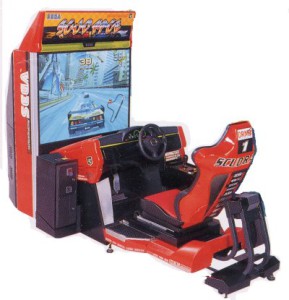 Sega Super GT (SCUD Race) 1996: Just like AM2 launched their model 1 with Virtua Racing and how they launched their Model 2 board with Daytona USA, they launched their Model 3 board with Sega Super GT (or known in Japan as SCUD Race aka ‘Sports Car Ultimate Drive’).
Sega Super GT (SCUD Race) 1996: Just like AM2 launched their model 1 with Virtua Racing and how they launched their Model 2 board with Daytona USA, they launched their Model 3 board with Sega Super GT (or known in Japan as SCUD Race aka ‘Sports Car Ultimate Drive’).
Sega Super GT was mean’t to be a sequel to the highly successful Daytona USA but since the project differed so much from their previous game they decided to go with a new title. Even though the game never came out on Dreamcast, AM2 did create a tech demo of the game running on Dreamcast hardware in a 1998 and showed it off during their Dreamcast Presentation (which SEGA later re-used the name for the GT series, which isn’t an arcade racer like this one).
Fun fact is that the BPR Global GT series was no longer a sport a whole year BEFORE this game came out, regardless of this SEGA still continued to make games with the brand name years later.
Gallery:
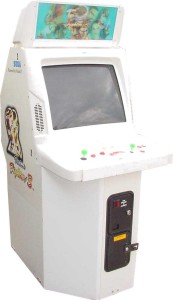 Virtua Fighter 3 (バーチャファイター3) 1996: Since AM2’s Model 1 board had Virtua Fighter and Model 2 board got Virtua Fighter 2, it was only right that Virtua Fighter 3 be announced as a early title for the Model 3. Thankfully for us, that is exactly what happen.
Virtua Fighter 3 (バーチャファイター3) 1996: Since AM2’s Model 1 board had Virtua Fighter and Model 2 board got Virtua Fighter 2, it was only right that Virtua Fighter 3 be announced as a early title for the Model 3. Thankfully for us, that is exactly what happen.
Virtua Fighter 3 is considered by many as the most controversial of all the Virtua Fighter games because of some of the changes that SEGA AM2 would later retract. The game introduced (like the previous sequel) two new characters with Aoi Umenokouji and sumo wrestler Taka-Arashi. Taka would later be the only retracted character in the franchise. He wouldn’t make his return until Virtua Fighter 5 R in 2008. The game would also introduce a fourth button for dodging and levels outside of the typical arena, giving users the ability to fight on the Great Wall of China or subway tunnels. Along with this came uneven terrain that most players found frustrating, so it was pulled from future games.
SEGA would later update Virtua Fighter 3 with their Virtua Fighter 3tb update that would focus on ‘Team Battles’ much like SNK’s King of Fighter series did. This is the version of the game that was later ported to Dreamcast. But before that version came out there where rumors of AM2 working on a SEGA Saturn add-on that would allow it to play Model 3 games. I mean, wouldn’t that be something? Virtua Fighter 3 also marks the directing debut of future Virtua Fighter director, Daichi Katagari. In a way Virtua Fighter 3 really is the midway point of SEGA’s big jump from Virtua Fighter 2 to the future of the franchise with Virtua Fighter 4.
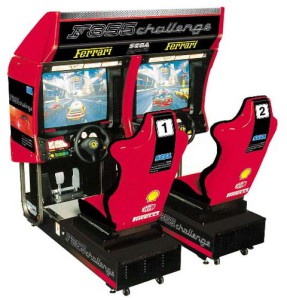 F355 Challenge (F355 チャレンジ) 1999: Was a game that Yu Suzuki had been working on and off for over a decade trying to bring the most ‘true driving eexperience and he thought he achieved that with F355 Challenge in 1999. Unlike many of AM2’s past racing games, Yu Suzuki tried to deliver a realistic user experience instead of the arcade driving the developer was used to.
F355 Challenge (F355 チャレンジ) 1999: Was a game that Yu Suzuki had been working on and off for over a decade trying to bring the most ‘true driving eexperience and he thought he achieved that with F355 Challenge in 1999. Unlike many of AM2’s past racing games, Yu Suzuki tried to deliver a realistic user experience instead of the arcade driving the developer was used to.
Rumor has it that Yu Suzuki used his own Ferrari F355 as basis for features that where included into the game. This isn’t surprising, since a few SEGA employees where known to be real life avid Ferrari fans and owners. Yu Suzuki and Sonic co-creator Yuji Naka being two of the most famous ones.
F355 Challenge showed a new side of AM2, moving away from arcade racing and trying to deliver a close to life simulation. Its this time of drastic change that made them a legend in the arcades and it seemed even all these years later they would still use the little red Ferrari. According to SEGA’s PR at the time a professional F355 driver used the game as training in his off season and actually improved his real life lap times at Long Beach. How much truth to that?
Gallery:
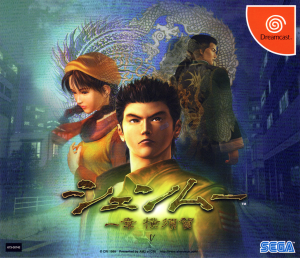 Shenmue (シェンムー 一章 横須賀) 1999: Considered to be the largest undertaking in SEGA’s history for a single game, having a budget of 70 million dollars which was unheard of the time. AM2’s Shenmue didn’t start life on the platform it ended up on, the Dreamcast. At first it was suppose to be a big title for the SEGA Saturn, but after the console failed they moved development to the Dreamcast and thus started our journey with young Ryo Hazuki.
Shenmue (シェンムー 一章 横須賀) 1999: Considered to be the largest undertaking in SEGA’s history for a single game, having a budget of 70 million dollars which was unheard of the time. AM2’s Shenmue didn’t start life on the platform it ended up on, the Dreamcast. At first it was suppose to be a big title for the SEGA Saturn, but after the console failed they moved development to the Dreamcast and thus started our journey with young Ryo Hazuki.
Shenmue showed the AM2 spirit of focusing on the minor details that would go on to make the game’s world more immersive. The game would feature a real time weather system, each character no matter how minor would have their own model, NPCs would have a cycle (like waking up each morning to go to work) and much more. Just how AM2 pioneered technology in the arcades, it would continue that way of thinking by pushing the Dreamcast to its hardware limits.
Since the game takes place during 1986 in Japan, the game features two full AM2 games (Space Harrier and Hang-On) that the player can play in the arcade shop. This is actually the second Yu Suzuki headed console only project, coming after their 1989 Mega Drive/Genesis RPG Sword of Vermilion (ヴァーミリオン).
I had to skip alot of minor games in the 90s since it would have taken all day, but some notable stuff I passed up included Sonic the Fighters, Virtua Striker, Fighters Megamix, and plenty more. Not to mention the sequels that AM2 did like Virtua Cop 2, Fighting Vipers 2, and even Daytona USA 2. I’m sure you will hear about all those games that I skipped in the comment section.
New millennium and a new audience

The early 2000s might have been great for SEGA gamers with SEGA’s white dream machine on store shelves and SEGA AM2 pumping out those promising Shenmue titles (At least in America, you know, all those magazine titles hyping us up about this game!). But a bit after the Dreamcast left the market, AM2 still continued to pump out hits. Not as constantly as the 90s, but they weren’t slouching either.
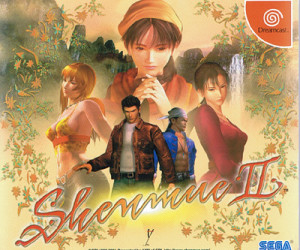 Shenmue II 2001 takes place right after the events of the first game, arriving at Hong Kong (we saw Ryo depart in the end of the first game) as he searches for Lishao Tao, a material masters Ryo found out about through Master Chen. SEGA AM2 took criticism from the first game to heart and changed the game to be faster paced compared to the first title which had more downtime and a slower paced story. The game also features the ability to time lapse, the option of purchasing maps to get around, having NPCs walk you to locations, and the ability to jump to key points made navigation easier. You would also need it due to how much bigger Hong Kong is than little Yokosuka, Japan.
Shenmue II 2001 takes place right after the events of the first game, arriving at Hong Kong (we saw Ryo depart in the end of the first game) as he searches for Lishao Tao, a material masters Ryo found out about through Master Chen. SEGA AM2 took criticism from the first game to heart and changed the game to be faster paced compared to the first title which had more downtime and a slower paced story. The game also features the ability to time lapse, the option of purchasing maps to get around, having NPCs walk you to locations, and the ability to jump to key points made navigation easier. You would also need it due to how much bigger Hong Kong is than little Yokosuka, Japan.
Shenmue II would also feature a whole new supporting cast and span three chapters while the first game only spanned one. This game tells the story of chapter 3 to 5, while the second chapter on the boat was never told outside of a short comic. Shenmue II came out on Dreamcast in Japan and Europe, while the first game in Europe had English voice overs, the second Dreamcast game didn’t due to budget reasons. Shenmue II never released in America on Dreamcast, but was exclusively published by Microsoft on the Xbox featuring the return of the English voice cast from the first game. Outside of the English voice cast there where little improvements in the graphics, reduced slow downs, and some optional filters. Shenmue II is the last entry and is known for ending in a cliff hanger that hasn’t been resolved. Shenmue III is still one of the highest requested games online, even though its been well over a decade since the Shenmue II came out.
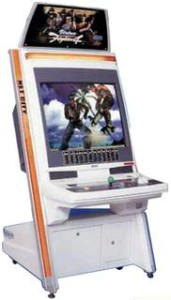 Virtua Fighter 4 (バーチャファイター4) 2001: was a big upgrade and would start the trend of having significant updates after its release. Virtua Fighter 4 would introduce 4 new characters, two with its first release and two more with its final update titled Virtua Fighter 4: Evolution. Even though the game ditched Virtua Fighter 3‘s fourth dodge button, the dodge feature was still intact by simply double tapping up or down. AM2 also reduced the jumping to only combo based movements, as well as overhauling the defensive fighting mechanics making it more advance.
Virtua Fighter 4 (バーチャファイター4) 2001: was a big upgrade and would start the trend of having significant updates after its release. Virtua Fighter 4 would introduce 4 new characters, two with its first release and two more with its final update titled Virtua Fighter 4: Evolution. Even though the game ditched Virtua Fighter 3‘s fourth dodge button, the dodge feature was still intact by simply double tapping up or down. AM2 also reduced the jumping to only combo based movements, as well as overhauling the defensive fighting mechanics making it more advance.
Much like the past Virtua Fighter titles, Virtua Fighter 4 would run on a new arcade board called Naomi 2 and thanks to this board Virtua Fighter 4 achieved having graphics far past other fighting games at the time, most notably Tekken 4 that came out a couple weeks prior. Unique at the time, Virtua Fighter 4 allowed users to carry their statsitcs and unlockable in-game items in their ‘Character Access Card’. The game would also introduce array of ranks based loosely on the Kyu/Dan system and this game even was the first one to use VF.NET.
As for home consoles this was the first game not to appear on a SEGA home console, but would be ported to Playstation 2 and released in 2003.
Gallery:
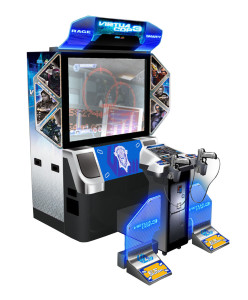 Virtua Cop 3 (バーチャコップ3) 2003: Is the third installment in the Virtua Cop trilogy by AM2 and while this game retains the gameplay of the last two installments, it also introduces a slow-motion ‘bullet time’ mode titled ‘ES Mode’. The way this mode is activated is by the player using the special pedal on the arcade, when in use the bar will deplete and you will have to shoot more bad guys down to refill it.
Virtua Cop 3 (バーチャコップ3) 2003: Is the third installment in the Virtua Cop trilogy by AM2 and while this game retains the gameplay of the last two installments, it also introduces a slow-motion ‘bullet time’ mode titled ‘ES Mode’. The way this mode is activated is by the player using the special pedal on the arcade, when in use the bar will deplete and you will have to shoot more bad guys down to refill it.
The game also allows you to toggle between weapons with a button on the gun, allowing you to switch from guns like the Smith & Wesson Model 629, Benelli M4 Super 90, H&K MP7, and the H&K G36C. The cabinet recieved a light gun (called the Guardian II) made by Tokyo Marui, who is famous for his toy gun models.
Since the game was made on SEGA Chihiro arcade board, which in turn is based on Xbox hardware, Virtua Cop 3 had a planned Xbox port that was later canceled. According to SEGA it was too expensive to make light guns to ship with the game. Users have had the ability to boot the arcade rom image on modded Xboxs with little to no issues. Virtua Cop 3 is the only game in its series not to receive a home port.
Gallery
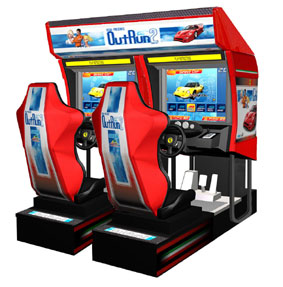 OutRun 2 (アウトラン2) 2003: Even though the game is a sequel to 1986’s OutRun, this is actually the fifth installment in the series. Unlike the first game, this one actually has the offical license from Ferrai and legally features the Testarossa and seven other bonus Ferrari vehicles.
OutRun 2 (アウトラン2) 2003: Even though the game is a sequel to 1986’s OutRun, this is actually the fifth installment in the series. Unlike the first game, this one actually has the offical license from Ferrai and legally features the Testarossa and seven other bonus Ferrari vehicles.
One of the new main features in OutRun 2 is the new drifting system, allowing users turn the wheel while tapping the breaks to activate. You will need it to move through rough edges and acquiring the best times through the courses.
Sumo Digital would later release OutRun 2006: Coast 2 Coast (2006) which would feature updated courses added in Outrun 2 SP and the new ‘Coast 2 Coast’ expansion exclusively on consoles. Outrun 2006: Coast 2 Coast was priased for its ability to run on multiple platforms including the Xbox, Playstation 2, PSP, and PC. Sumo Digital would later go on to create the kart racing SEGA mash up Sonic & SEGA All-Stars Racing franchise that takes fundamentals learned from this port.
Gallery:
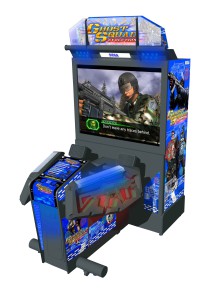 Ghost Squad (ゴースト・スカッド) 2004: is a 2004 light-gun shooter, much like Virtua Cop, instead this one places you in the shoes of a undercover squad, as you shoot your way through levels. Ghost Squad is also highly known for its humor and not taking itself seriously, along with its over the top action. This is one of the few AM2 games created for the SEGA Chihiro arcade board, which as actually based on Xbox hardware. The game is also known for allowing users to choose outfits and having 25 guns to choose from throughout the game.
Ghost Squad (ゴースト・スカッド) 2004: is a 2004 light-gun shooter, much like Virtua Cop, instead this one places you in the shoes of a undercover squad, as you shoot your way through levels. Ghost Squad is also highly known for its humor and not taking itself seriously, along with its over the top action. This is one of the few AM2 games created for the SEGA Chihiro arcade board, which as actually based on Xbox hardware. The game is also known for allowing users to choose outfits and having 25 guns to choose from throughout the game.
Even though the game was built on Xbox specific arcade board, it never made a console apperance on the Xbox, but was later one of the first light gun games ported by SEGA on the Wii. The Wii version features exclusive 4-player support.
The game got an updated version under the name Ghost Squad Evolution in 2007 that featured more weapons, costumes and higher difficulty settings. Regardless of these additions, it was still the same game. Ghost Squad is one of the few new IPs released during the 2000s that got a sequel later down in the road with 2012’s Operation GHOST.
Gallery:
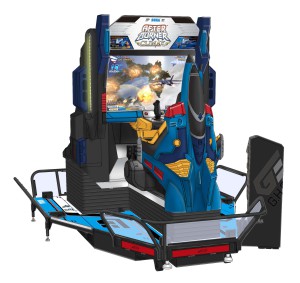 After Burner Climax (アフターバーナークライマックス) 2006: Is the latest entry in the After Burner franchise that started back in 1987. The game features gameplay similar to After Burner II but has the addition of the ‘Climax Mode’ that works quite like Virtua Cop 3‘s ‘ES Mode’ where if the meter is full the user will be able to slow down time giving them more time to lock on to targets.
After Burner Climax (アフターバーナークライマックス) 2006: Is the latest entry in the After Burner franchise that started back in 1987. The game features gameplay similar to After Burner II but has the addition of the ‘Climax Mode’ that works quite like Virtua Cop 3‘s ‘ES Mode’ where if the meter is full the user will be able to slow down time giving them more time to lock on to targets.
The game would also introduce a new combo-based scoring system, the first indoor stage and branching path progression system (similar to OutRun). Also introduced in this game is ‘Team Play Mode’ where linked cabinets play together as a squad and take oncoming enemies, person to score the highest in the end of the stage is declared the winner.
After Burner Climax is one of AM2’s first titles on the SEGA Lindbergh arcade board that was introduced in 2005. The game would receive a port on PSN and XBLA in 2010 and as of December 16th, 2014 the game has been pulled from sale on those services. Most likely due to copyrights for the game licenses expiring and SEGA unwilling to renew them for an old game.
Gallery:
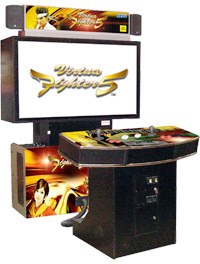 Virtua Fighter 5 (バーチャファイター5) 2006 is the sequel to 2001’s Virtua Fighter 4 and to think people thought waiting 5 years for this sequel was a long time. What about now? We are still waiting for Virtua Fighter 6 going on 9 years? Even though AM2 has a brand new graphic engine that looks quite impressive, it mostly sticks to the foundation set forth by Virtua Fighter 4. At launch the game offered two new combadaints, Eileen and El Blaze. After a few big updates two new fighters got added to the roster, the new Judo fighter Jean Kujo and the return of Virtua Fighter 3‘s Taka-Arashi.
Virtua Fighter 5 (バーチャファイター5) 2006 is the sequel to 2001’s Virtua Fighter 4 and to think people thought waiting 5 years for this sequel was a long time. What about now? We are still waiting for Virtua Fighter 6 going on 9 years? Even though AM2 has a brand new graphic engine that looks quite impressive, it mostly sticks to the foundation set forth by Virtua Fighter 4. At launch the game offered two new combadaints, Eileen and El Blaze. After a few big updates two new fighters got added to the roster, the new Judo fighter Jean Kujo and the return of Virtua Fighter 3‘s Taka-Arashi.
Virtua Fighter 5 in the arcades has been one of the most updated AM2 games to date, getting several versions updates in the same year of release.The game would receive new modes like Knockout trail, Item quest and even Bingo events after its initial release.
The home releases for Virtua Fighter 5 caused some contervsary, first being announced as a Playstation 3 exclusive without online, it was later announced and released on the Xbox 360 with online and running a newer ‘version C’ of the game. SEGA would later release the ‘completed’ version of Virtua Fighter 5 as Virtua Fighter 5: Final Showdown as a budget release on XBLA and PSN. These versions also make you pay for all the custom items that you would unlock in the arcades through progression.
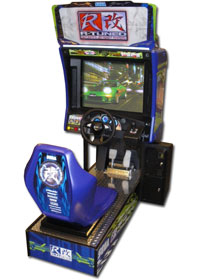 R-Tuned: Ultimate Street Racing (はチューン:究極のストリートレーシングR) 2008: is actually one of the last AM2 made racing games and runs on SEGA’s Lindbergh arcade board. This game, like most AM2 arcade racers, focuses on speed by having unlimited boost buttons via the steering wheel.
R-Tuned: Ultimate Street Racing (はチューン:究極のストリートレーシングR) 2008: is actually one of the last AM2 made racing games and runs on SEGA’s Lindbergh arcade board. This game, like most AM2 arcade racers, focuses on speed by having unlimited boost buttons via the steering wheel.
The game also has over twenty selectable vehicles from companies like Toyota, Nissian, Honda, Mitsubishi, Subaru, Ford, Chevrolet, and Pontiac. All cars have the ability to be tuned for better performance as you play and unlock features. The game also allows you to customize your cars and you can save progress and records via an IC card.
The game has a total of 16 courses but only ranging from four locals (most of them being from the east). You have two locations from Japan: Shibuya and Shinjuku. You have Hong Kong and New York being the odd ones out.
Lastly the game has two modes of play: Battle Mode and Time Attack which are pretty self explanatory.
Gallery:
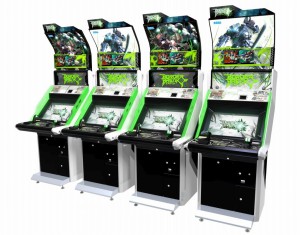 Border Break: Sega Network Robot Wars (ボーダーブレイク Bōdā Bureiku) 2009: Is one of the latest new AM2 franchises and the first game on SEGA’s RingeEdge arcade platform. Border Break was a big success for SEGA, selling over 2,436 machines to arcade operators by the end of 2009 (Japan only). As of March 2012 the franchise has grossed over 100 million dollars.
Border Break: Sega Network Robot Wars (ボーダーブレイク Bōdā Bureiku) 2009: Is one of the latest new AM2 franchises and the first game on SEGA’s RingeEdge arcade platform. Border Break was a big success for SEGA, selling over 2,436 machines to arcade operators by the end of 2009 (Japan only). As of March 2012 the franchise has grossed over 100 million dollars.
The game takes a similar premise to AM3’s Virtual On series where the player takes a giant robot into battle. In this game you will be split into two groups with the objective of destroying the opposing team’s reactor core. After each mission, points are given and this will add to your rank which you can level up.
The robots in the game are called Blast Runners, which come in basic classes such as Assault, Heavy, Snipe and Support. The game’s cabinet also uses a touch panel to communicate with other players and navigate menus such as the map. Much like every AM2 game after Virtua Fighter 4, the game features data cards that players can purchase to take their data and rewards with them.
Gallery:
Even though the arcades have been on a steady decline, they aren’t all the way dead in Japan. Though they are now catering to a different market than they used to in the past, which means the output from AM2 in recent years has been spotty and not as invoative and break through as most us fans are used to seeing from them.
A time of drought and waiting…

The end of the 00s where a time of uncertainty for AM2, with Yu Suzuki leaving the company to form his studio YS.NET. Yu Suzuki said in an interview that it was the right time for him to leave the studio due to SEGA shutting down lots of projects:
“There was one other title as well, and that one also got stopped by Sega midway. But maybe that was for the better, because the Sega of the time was not in all that good shape, and they were shrinking down a lot of projects… maybe that part of it doesn’t need to get written down. [laughs] I don’t want to impact Sega’s image.” – Yu Suzuki interview with Gamasutra in 2011.
For the first time since Yu Suzuki took the helm and created Hang On in 1985, the team has been hard at work bringing new and exciting arcade titles that push the hardware limits. Sadly SEGA AM2 skipped out on making arcade titles for the successor of RingEdge, called RingeEdge 2. Instead they continued to update their robot fighting hit, Border Break releasing highly touted updates like Border Break Airburst (2010), Border Break Union (2012) and Border Break Scramble (2014).
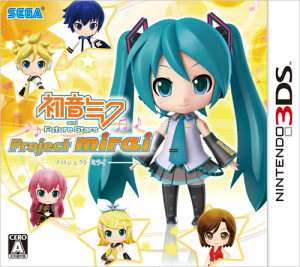 During 2012 SEGA AM2 did one of their first handheld games with Hatsune Miku and Future Stars: Project Mirai on the Nintendo 3DS. They would go on to release the sequel Hatsune Miku: Project Mirai 2 also on the 3DS. Even though the titles where Japanese exclusive at first, last year SEGA announced they would be bringing Hatsune Miku: Project Mirai Remix which is an enhanced version of the second game sometime in 2015.
During 2012 SEGA AM2 did one of their first handheld games with Hatsune Miku and Future Stars: Project Mirai on the Nintendo 3DS. They would go on to release the sequel Hatsune Miku: Project Mirai 2 also on the 3DS. Even though the titles where Japanese exclusive at first, last year SEGA announced they would be bringing Hatsune Miku: Project Mirai Remix which is an enhanced version of the second game sometime in 2015.
Even though AM2 has been pretty dormant when it comes to releasing new big arcade titles, that isn’t stopping SEGA from updating their arcade boards with the new ‘successor’ to RingeEdge 2, in 2013 SEGA announced and released their newest arcade board titled SEGA Nu and so far there has only been one title released for the platform. Not only that, recently we have been hearing fresh rumors about a new entry to the highly successful Virtua Fighter franchise…
Would like to thank various resources online for providing a great database of unwatermarked images and information for lazy bloggers like me. I’d like to thank Hardcore Gaming 101, Sega Retro, System 16 and Arcade Museum.
Ad:
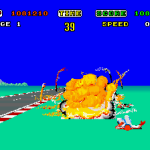
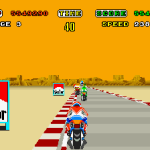
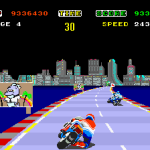
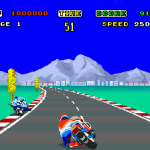
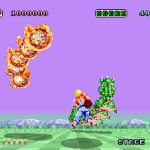
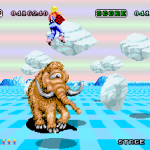
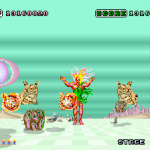
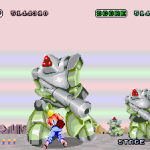
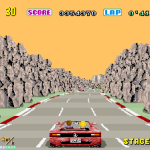
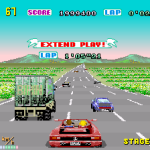
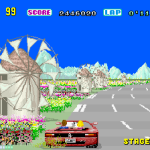
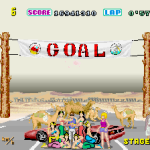
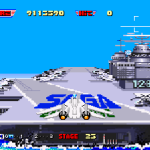
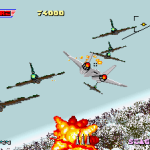
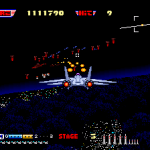
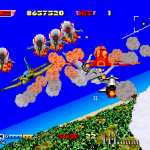
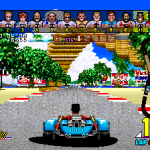
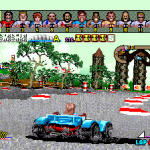
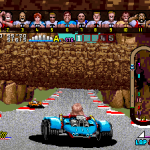
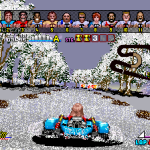
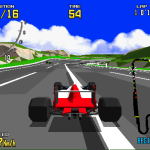
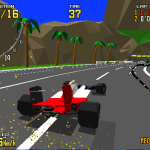
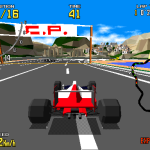

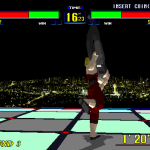
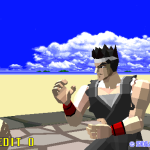
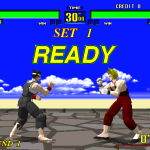
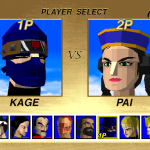

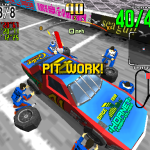
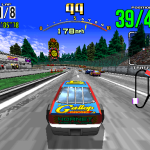
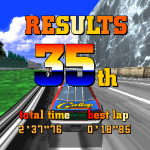
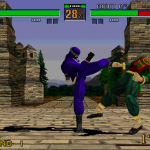

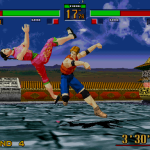
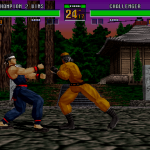
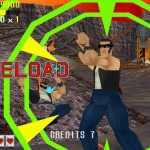
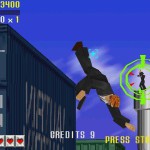
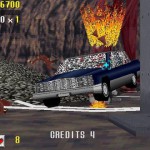
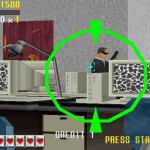
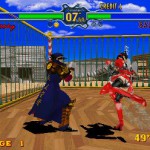
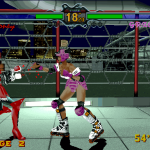
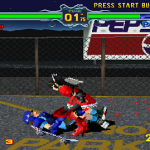

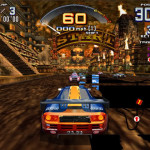
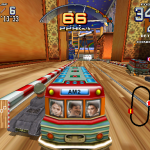
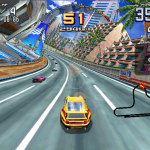
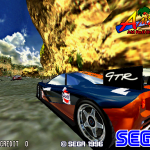

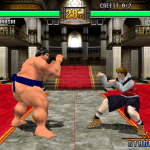

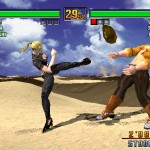
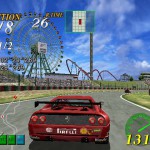
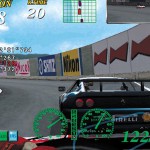
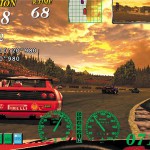
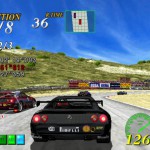
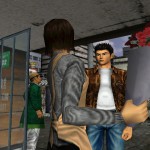
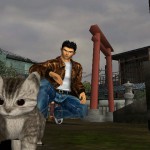
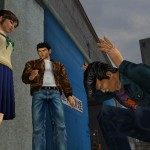
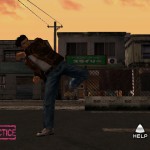
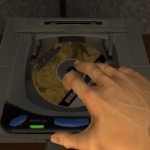
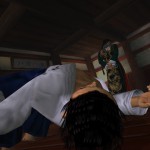
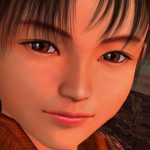
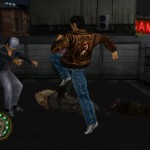
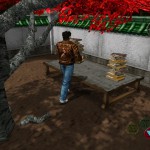
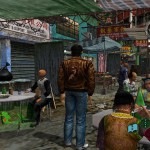
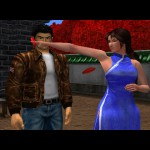
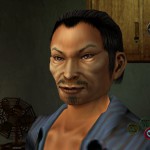

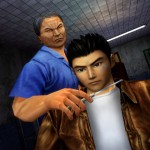
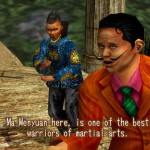
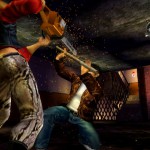
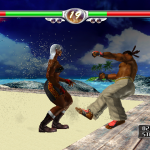
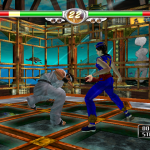
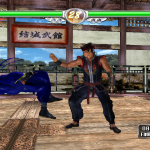
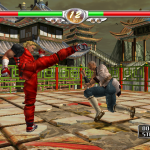
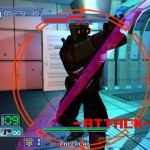
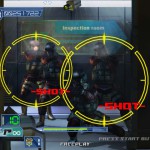
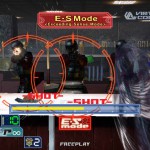
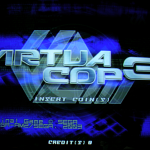


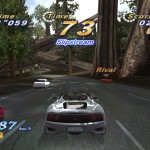
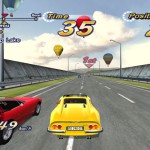
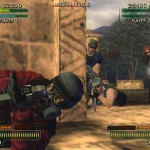

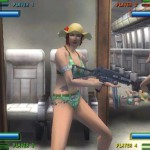
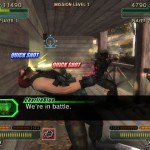
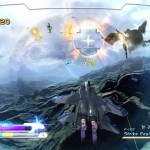
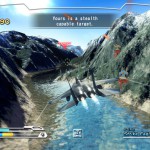
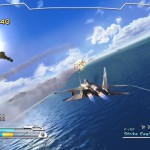
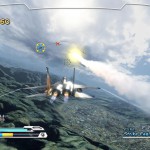
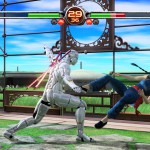
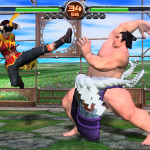
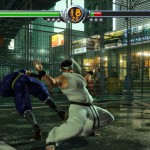
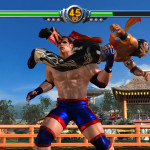
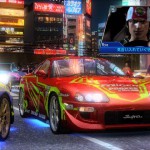
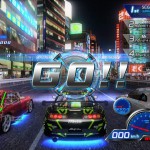
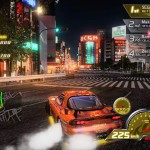
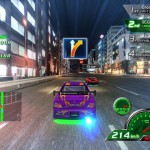
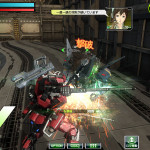
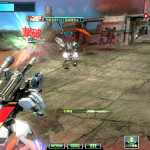
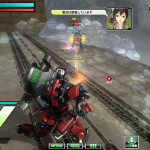
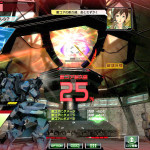
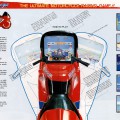
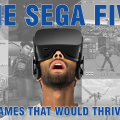
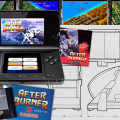
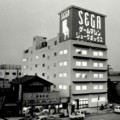

Sword of Vermillion was brilliant. I loved that game. The music score was great too.
I have probably played over 80% of these AM2 arcade games growing up and still do now. Congrats and long live!
Year of developers ey?
Well I think it’s time to update those Sega Retro pages, since they are a bit of a mess right now…AM2 , Sonic Team and external devs are easy cases, but everyone else is kinda hard to follow on who did what.
Anywho understandebly so, but you did miss AM2’s action RPG venture in the arcde with Quest of D and then the Shining Force Cross stuff.
And AM2 did all the Hatsune Miku stuff also, and not just the mirai games: https://jp.linkedin.com/in/makoosa
And Nu has 1 other game announced, Wonderland Wars…
Thanks! Made a few minor edits to reflect Nu and Miku. As for the missed titles, George wasn’t aiming to hit every title, mainly the notable ones. We’re going to focus on other unmentioned titles as the month rolls on, including unreleased and obscure titles.
i thought SEGA Race TV was by AM Plus, not Am2?
It’s kinda the issue.
Personally, I’d like to think, that with the exception of the period of 2000-2004, everything was simply made by “Sega”.
Sure AM2, Sonic Team, Team Andromeda were names you saw in the game yeah, but it was more of a quirky name the devs call themselfs, rather really being “official game studios”, that are independent. You only the “AM2” flashing, only like 7 times really. Everything else, even things like Daytona 2 or Hang-On just has “Sega”.
AM1, AM7, AM3 etc. really are just arbritary names that journalists came up with back then and somehow still are used by Sega fans. Like every game company in Japan, it’s just “Consumer R&D #1, #2, #3” (which is consoles), and “Amusement R&D #1, #2”. Except for Sega, fans never tried to keep track of these corporate names.
Sometimes when the devs made a big hit, they give themself a name. Like Sonic Team, or in Namco TEKKEN team.
Even today in Sega of Japan, when Sega made the big hit “Mushiking”, they called themself “Musiking Team” onwards. Or that new rhythm game “Chunithm”, is being made now by the “maimai” team. Or now the “Phantasy Star” team, is the “PHANTASY STAR CREW”.
I assure you when for example the Border Break team is making a new title, it will be by the “Border Break team” rather than AM2, cause in Japan, Border Break is most likely more known.
Throughout the year we’re going to experience a bit of crossover with other development groups thanks to SEGA’s shuffling about of staff and the creation and closing of teams. When notable staff, like Suzuki at AM Plus, work on games for other teams that had a limited number of releases we’ll still be covering them. I’ll make sure to update the article to reflect the AM Plus credit.
Which devs are you guys gonna cover?
We have a list of a little over a dozen that George and I are in the process of assigning to months. Some months will feature more than one dev, and we’re looking into how to incorporate third party devs. We’d love to give Sumo some attention, for example, but not a whole month.
You are 100% correct. My mistake, with all the name of studios that Yu Suzuki was working with at the time it gets a little confusing. What was it? Digital Rex, AM Plus, forgot who was behind the developement of that Shenmue Online game and now YS.NET. Wish he would release more games.
Anyway I edited the post and took off SEGA Race TV. Thanks for the heads up.
No problem! It is a little confusing. Am2 did What’s Shenmue?, Shenmue I, US Shenmue, Shenmue II, and Shenmue IIx, and then what we theorize to be some Shenmue III. Digitalrex then formed and failed to do anything except hype up Shenmue fans before being sent back to newly formed SEGA – Sammy. Though their logo did appear in the August 2004 announcement trailer of Shenmue Online.
AM Plus had their logo on the 2006 China Joy Shenmue Online trailer, then dissolved when Suzuki left to form YS.Net, where he has done Shenmue Gai and two VF mobile games, I believe.
So funny that Hang-on was meant to be hang off because mistype of a Japanese magazine.
Sounds much better Hang-on though.
wow, great article! you covered lots of great Sega AM2 ground! = )
There’s still something kinda awkward about arcades basically being gone. I do have a local Fun Factory but there’s nothing – no VF, Virtua Cop
A definitive book should be made about this. I would buy a book based on SEGA arcade history.
One does exist… in japan. Famitsu’s SEGA Arcade History. It’s a lovely little book, but I can’t understand a word. Nice picktures though.
I recommend checking out the 100 Yen arcade experience documentary. Goes on about the Japanese arcade scene to even today. Got some old school Sega devs talking too.
I agree that a proper book about Sega’s , at this point, over 50 year arcade history, would be great. Kickstart it someone!
SEGA history books… funny you should mention that…
+ daytona 2 and SDF Macross game
Well I was only putting the ‘popular’ titles, as you see I skipped a lot of sequels outside of ‘serious ones’. But I mentioned that in the article:
“I had to skip alot of minor games in the 90s since it would have taken all day, but some notable stuff I passed up included Sonic the Fighters, Virtua Striker, Fighters Megamix, and plenty more. Not to mention the sequels that AM2 did like Virtua Cop 2, Fighting Vipers 2, and even Daytona USA 2. ”
Mostly skipped SDF Macross due to it being Japan only and not real notable compared to all the other stuff mentioned here.
+ it’s published by Bandai
Games we have already emulated and dumped.